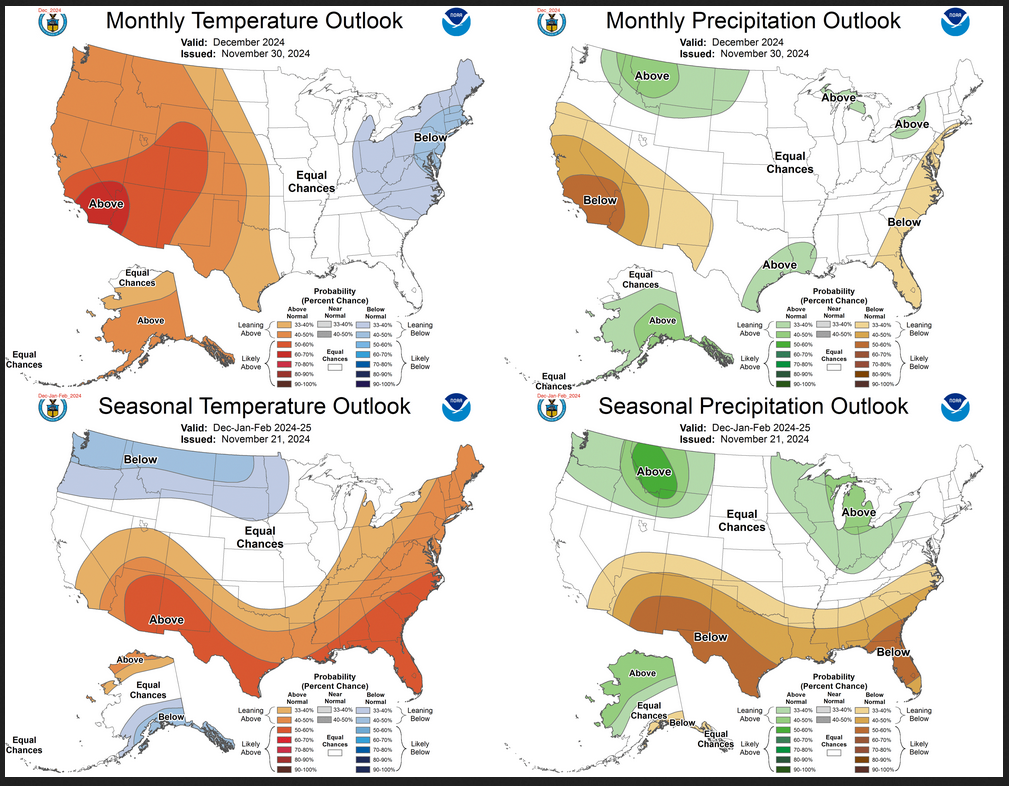Weather Outlook for the U.S. for Today Through at Least 22 Days and a Six-Day Forecast for the World: posted December 7, 2024
This article focuses on what we are paying attention to in the next 48 to 72 hours. The article also includes weather maps for longer-term U.S. outlooks (up to four weeks) and a six-day World weather outlook which can be very useful for travelers.
First the NWS Short Range Forecast. The afternoon NWS text update can be found here after about 4 p.m. New York time but it is unlikely to have changed very much from the morning update. The images in this article automatically update.
Short Range Forecast Discussion
NWS Weather Prediction Center College Park MD
Sat Dec 07 2024
Valid 12Z Sat Dec 07 2024 – 12Z Mon Dec 09 2024…Periods of mixed rain and snow linger from the Great Lakes to northern
New England through the weekend……Heavy rain threat emerges across the Deep South late Sunday into
Monday……Unsettled and windy weather spreading across the Pacific Northwest this
weekend will reach into the northern Plains as snow by Monday……Arctic air across the eastern U.S. will give way to above normal
temperatures by Monday…As an arctic high pressure system moderates and retreats across the
eastern portion of the country, unsettled weather will emerge and expand
across the Deep South as well as the Pacific Northwest. Moisture
returning behind the high pressure system today will begin to interact
with an upper-level trough and a coastal front just off the Texas coast.
This will result in expanding areas of light to moderate rain with
embedded thunderstorms across the eastern two-thirds of Texas today. The
entire system will shift northeastward on Sunday before evolving into a
heavy rain threat across the lower Mississippi Valley toward the Tennessee
Valley by late Sunday into early Monday. A couple of inches of rain is
expected in this general vicinity with locally higher amounts through
Monday morning.Meanwhile, periods of mixed rain and snow are expected to linger across
the Great Lakes and into northern New England where a clipper low pressure
system is forecast to track along a nearly stationary arctic front. Up to
a foot of new snow is possible near the Canadian border in these areas.The Pacific Northwest is entering a period of increasingly unsettled
weather as a rather dynamic upper trough arrives from the Pacific.
Low-elevation rain and high-elevation heavy snow can be expected for the
Cascades and northern Idaho as the weekend progresses with windy
conditions. The mountain snow and low-elevation rain will progress
farther inland into the northern Rockies early Sunday as a low pressure
system begins to develop across the northern High Plains into Alberta
Province of Canada. Winter Storm Warnings and Advisories are active
across the northern Rockies through Saturday where several inches of
snowfall and some icing potential will create hazardous travel conditions.
Meanwhile, much of the remainder of the western U.S. will remain dry and
milder than normal as high pressure dominates. By Sunday night into
Monday morning, a low pressure system is forecast to track across the
northern Plains with snow and wind. Mainly light snowfall amounts are
expected for North Dakota into Montana, with high amounts enhanced by
local terrains.Low temperatures in the 20s as far south as the Florida Panhandle this
morning have prompted Freeze Warnings for portions of northern Florida
into Georgia. High temperatures will begin to moderate across the East by
Sunday as anomalously mild temperatures across the central U.S. shift
eastward into the region. Highs should be in the 60s and 70s Sunday across
the Southeast and 50s and 40s across the Mid-Atlantic and Northeast, while
50s and 60s will expand across the northern and central Plains Sunday
afternoon ahead of the developing low pressure system.




